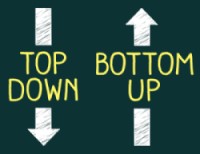Creating Sustainable Change – How to create and sustain change?
April 3, 2025
 Creating Sustainable Change – How to create and sustain change?
Creating Sustainable Change – How to create and sustain change?
Who doesn’t like change and who doesn’t want to change? These are certainly truisms in the 21st century landscape where businesses proclaim their commitment to change and exhort their employees to “Be the change you want to see”. However, having a vision and mission statement that commits to change is different from actualizing the change.…
 Why Some Organizations are Better at Driving Change ?
Why Some Organizations are Better at Driving Change ?
We live in a world where increasing complexity is the order of the day and the business landscape is characterized by a rapid turnover of companies which find themselves dethroned from their position because of outmoded thinking or anachronistic strategies. For instance, Nokia and RIM (the maker of Blackberry) were at the top of the…
 Contingency Model of Change Management: Dunphy and Stace’s Model of Change
Contingency Model of Change Management: Dunphy and Stace’s Model of Change
The contingency model is an extended version of Lewin’s three step in which Dunphy and Stace (1988, 1992 and 1993), explained the process of change from the transformational organization perspective. Dunphy and Stace (1993), put forth a situational or contingency model of change, which emphasized on the fact that organizations should vary their change strategies…
It is often the case that companies are faced with a dilemma about whether the change initiatives must be driven from the top or they should be organic from the bottom up. This is especially the case with organizations that are growing in size where the increase employee base or the skyrocketing sales and revenues mean that the top management’s scope of control is more and hence driving change from the top alone might not just work.
And for those organizations that initiate change from the top, they might find themselves in a situation where the middle and bottom layers of the organizational hierarchy may not be responsive or energized in the way the top managements wants them to be.
So, the existential questions as to whether there ought to a spontaneous involvement from all the levels, or whether the top management must induce the change, are very real and need to be answered for change initiatives to succeed.
The answer as to which option is preferable depends on a number of factors:

For a change initiative to be successful the top management has to communicate and the employees have to respond. Like Bees gathering around honey and being driven by the Queen Bee, organizations have to ensure that while the CEO or the other top managers initiate the change, employees at all levels must take to the change as well.
So, a mix of having the top management initiate the change and letting the employees take over from them works best for larger organizations where micro management by the top management might not work.
Examples of organizations that have embraced change successfully include 3M, Google and Facebook where the visionary leaders at the top ensured that the initial germ of an idea was seeded in the employees and then they let the trees grow by sampling nourishing them from time to time while at the same time preferring organic growth rather than transplanted growth.
The other extreme is marked by failures like HP where the top management was unable to make their employees buy into their change strategies. Of course, this is not to say that organizations need visionary leaders as essential elements of success. Though it helps, companies can make do with success if they have a combination of people enablers who take pride in their organizations and can empower the employees to participate in the change initiatives.
In conclusion, change can be driven solely from the top. However, for continued success, change has to come from within each employee and this can only happen in organizations that have an organizational culture that encourages each employee to contribute to the initiatives.
Change can thrive where there is an institutional catalyst and hence the key takeaway is that the organizational structures have to be built in such a way that no one individual can either make or mar the chances of success.
Your email address will not be published. Required fields are marked *